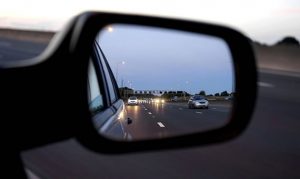A common issue for some drivers is that they keep forgetting to check mirrors. This issue not only affects learners and newly qualified drivers, but it’s a problem that can also affect experienced drivers.
It is in fact a serious problem and not one that should be based on hindsight – understanding the problem only after an event has occurred. Imagine forgetting to check your mirrors before changing lanes on a busy high-speed motorway, the result could be catastrophic.
So if you suspect your driving observational skills are somewhat lacking, it’s advisable for your safety and the safety of other road users, to get it sorted sooner rather than later.
If you keep forgetting to check your mirrors, you are driving on borrowed time and an incident will inevitably occur at some point. Detailed here are techniques used by professional driver trainers.
To some, the techniques may seem a little tedious, but the only effective way of consistently remembering to look into your mirrors is awareness, anticipation and planning.

How to Remember to Check Mirrors
You need to check your mirrors for these reasons:
- Hazards – these can be potential hazards or developing hazards hazards
- a potential hazard is for example a pedestrian that looks like they might cross the road but instead waits, or a car moving towards a junction to move into your road but safely stops at the junction line
- a developing hazard has escalated from a potential hazard and is for example a pedestrian that has now stepped out into the road up ahead or that car moving towards a junction does not slow down but instead moves out into your road possibly making you slow down or change direction
- When you change direction
- any change of direction such as left / right turns, junctions or lane changes
- When you change speed
- any changes in speed whether increased or decreased
- Random checks of the rear mirror
- frequent checks in the rear mirror to asses what’s going on behind
These are essentially the ‘triggers’ that should evoke a reaction to check your mirrors. You can do this on your own, though best results are to ask an experienced driver to sit alongside you.
The important thing to remember is to remember the ‘triggers’; that is anything that may cause you to change direction or speed (potential hazard) and any time you change speed or direction in the general course of driving. Ask your passenger to prompt you on each of these occasions to check your mirrors and keep doing this each time you drive alone.
It does seem like a lot of looking in the mirrors, but after a short while this will become a normal reaction for you and you’ll be looking in your mirrors far more and will also naturally look in them when it’s appropriate and not unnecessary.
For a greater understanding of what mirrors you should check at particular times, see use of mirrors.
